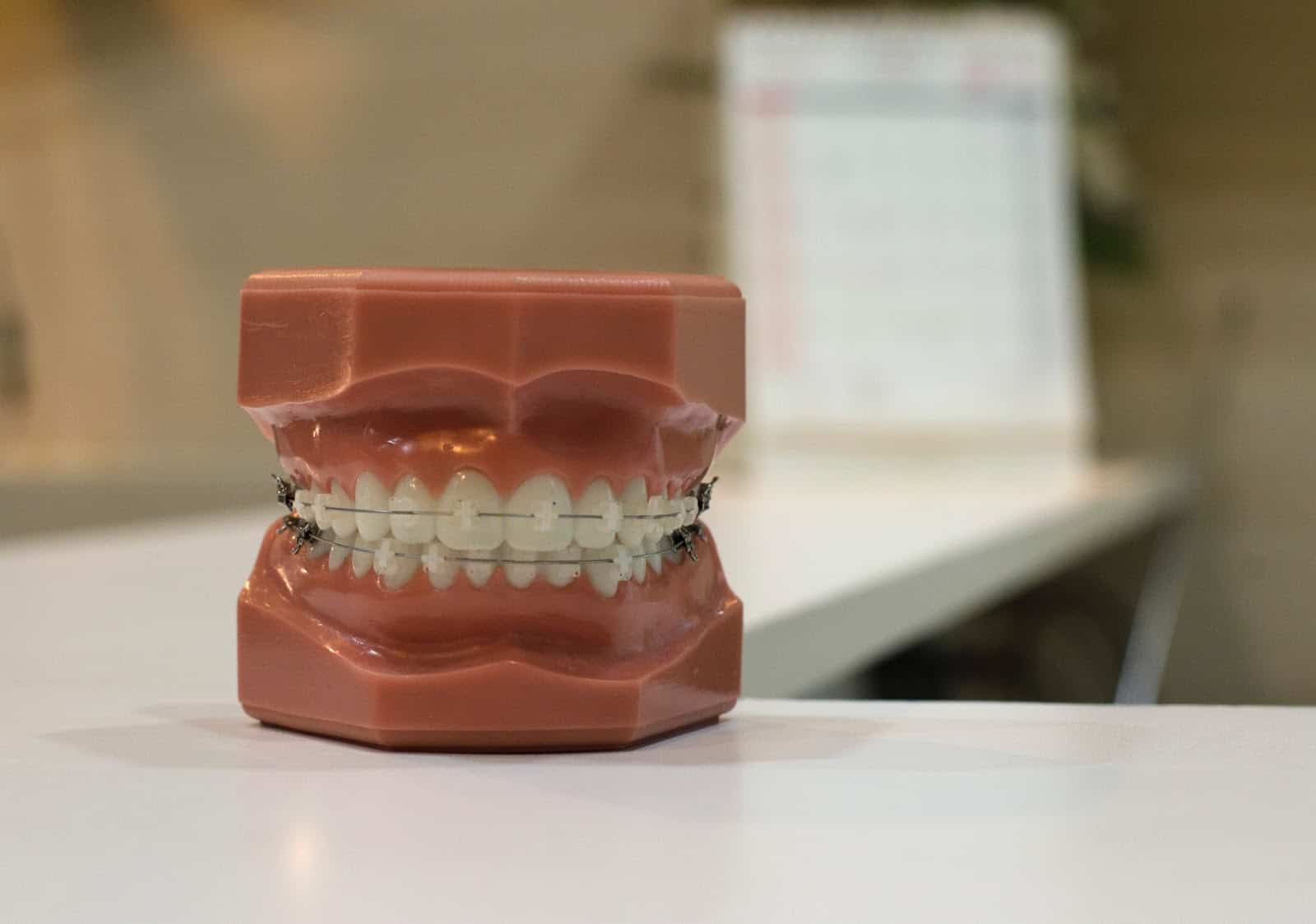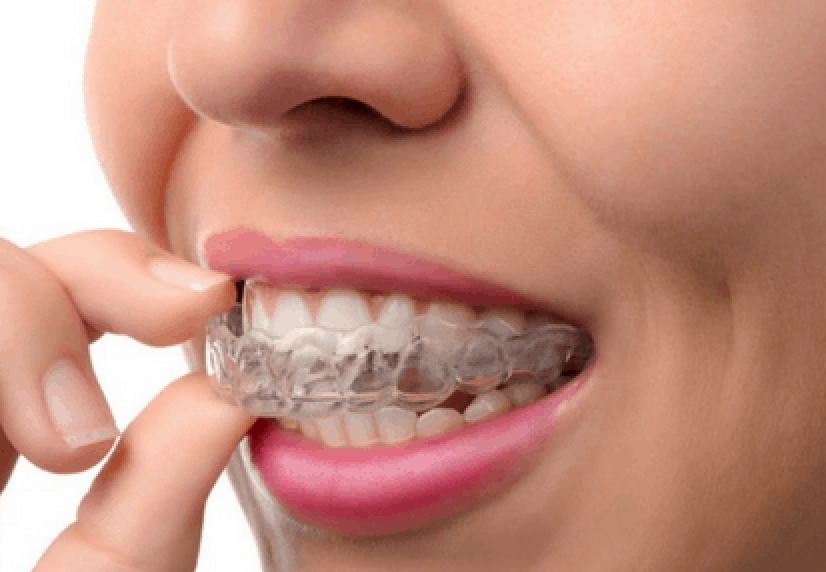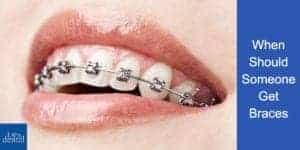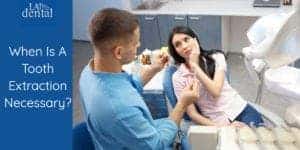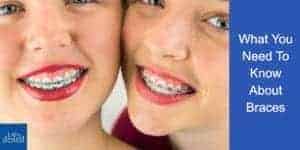Crooked teeth are very common and there are many options to treat them. Teeth can shift and adjust over time, and oftentimes, this is problematic. Whether you experience crooked teeth from overcrowding, or you suffer from diastema, gapped teeth – there are modern orthodontic procedures that can assist in getting a straighter smile. Popular options to fix crooked teeth can range from braces and Invisalign to bonding, and other restorative dental procedures.
1. Braces
According to a recent article by the American Dental Association, “1 in 4 adults avoid smiling due to the condition of their mouth and teeth.” Thankfully, braces are a common option for attaining straighter teeth, so you can be proud of your smile. Braces are a straightforward procedure. Your dentist will make specific braces designed for you. Braces work by gently shifting your teeth into alignment, generally over the span of 1-3 years. On most dental visits, the braces are tightened slightly, bringing the teeth even closer.
There are many different types of braces. They include metal braces, clear braces, and lingual braces. Let’s explore the pros and cons of each option:
Pros of Getting Metal Braces
- Metal braces are the most widely used practice for straightening teeth, and arguably offer the most reliable and effective results of all the teeth alignment techniques
- They are less expensive compared to other dental and orthodontic procedures
Cons of Getting Metal Braces
- They require regular brushing and flossing
- There are food restrictions
- They require regular maintenance
- Many people don’t like how they look
Clear Braces
Clear or transparent braces are often made from clear ceramic or plastic. They blend into the teeth better and are equally as effective as metal braces. These brackets are bonded to the front of the teeth for long term continuous use. Clear braces are less noticeable than traditional metal braces, and they are often preferred for aesthetic reasons.
Pros of Clear Braces
- Their clear structure makes them hard to spot
- Less noticeable than traditional metal braces
Cons of Clear Braces
- Clear braces are made from plastic/ceramic, they are more prone to breakage
- The ‘archwire’ is noticeable across the teeth
- They require restrictions on certain food items
- Staining can make them more visible
Lingual Braces
Lingual braces are unique, unlike traditional braces, lingual braces are bonded to the back of your teeth or the tongue side of your teeth which makes them invisible. They work to align the teeth from behind the tooth, rather than in front. Although they are somewhat unable to spot, they still function like normal braces. They have the brackets, wires, and elastics which need timely tightening and maintenance. Lingual braces are less effective for severe cases of crooked teeth, however, they are a more aesthetic alternative.
Pros of Lingual Braces
- They are invisible because they are the back of your teeth
- Function the same as traditional braces
Cons of Lingual Braces
- They are more expensive
- Longer appointments are required due to the difficulty of accessing brackets behind teeth
- They require a longer time for successful treatment
- Tongue sores, irritation, and problems in speaking may occur
2. Limited Bonding
Dental bonding is used to conceal a variety of different dental problems and it is often used to improve the appearance of the teeth. Porcelain or ceramic material is used to mask gaps or dental defects such as slightly chipped or stained teeth. Dental bonding is a fast and affordable way to correct minor imperfections on the teeth.
Pros
- Tooth preservation. Unlike dental veneers, which require preparing the teeth before, bonding is done without the preparation consequently preserving the natural tooth enamel.
- It is an inexpensive dental procedure
- Bonding can be completed within a single appointment
Cons
- Bonding is less stain resistant
- Bonding materials may chip or break off as it is not as strong as the tooth itself
- It is often a temporary correction for dental cosmetic issues
3. Invisalign
Invisalign is one of the most popular ways to align teeth. It involves the use of a series of aligners made specifically for your mouth. The treatment time can range from 3 months to a year. These invisible, smooth plastic trays are one of the most recommended procedures today and serve as an excellent alternative to traditional braces. Many adults choose Invisalign over traditional braces to fix crooked teeth, it is a subtle way to straighten your smile. Invisalign aligners can also be removed, so it is easier to keep the teeth clean.
Pros
- Made out of invisible, smooth plastic
- Practically invisible
- No restrictions on food items
- No restrictions on physical activities
- They can be faster than braces
Cons
- Invisalign trays need to be removed to clean teeth
- Brushing your teeth is mandatory after every meal before replacing the tray
- Not suitable for open bite alignment or severe overcrowding
4. Restorative Dentistry
These procedures can help to fix a crooked smile and replace or repair damaged teeth. Restorative treatments such as crowns or fillings can help to maintain the health of your teeth and preserve their longevity.
Fillings
These are used to fill the hole in your tooth after a cavity. Fillings fill these cavities with resin, porcelain, amalgam or gold fillings. Normally people prefer porcelain fillings due to their resemblance to the natural teeth. After a cavity, your teeth are weaker and cannot simply be left untreated. A filling helps to seal the area where the cavity used to be, and it prevents future cavity-causing bacteria from entering the hole.
Pros
- A quick fix for cavities
- Porcelain fillings resemble the structure and color of teeth
- Protects and strengthens the teeth
Cons
- Metal fillings are not bonded but rather ‘locked’ into cavities
- Porcelain fillings are brittle and more prone to breakage
Dental Crowns
Crowns are used when a tooth has been heavily filled or fractured. They cover the tooth and act as a protective barrier, to help keep the tooth strong after a cavity. They are sealed with bonding to keep harmful bacteria out.
Pros
- Due to the resemblance, they are good for both front and back teeth
- They protect the tooth and add strength
Cons
- They can chip or break
- They can create wear on the teeth it bites against
- In porcelain fused metal crowns, the metal is sometimes visible
Talk With Your Dentist
Whether you are looking to correct a crooked smile, fill a gap tooth or restore strength to your teeth, there are many different orthodontic options to choose from. Your dentist will develop a treatment plan that is right for you. Often, a combination of the above treatments can have an incredible impact on your oral health, and your smile.
Contact LA Dental Clinic
The team at LA Dental Clinic has helped to treat thousands of patients in the Los Angeles area. Talk with our dentists to determine a treatment plan specific to your needs and your dental goals. Whether you want to fix a crooked smile or simply learn more about your oral health options, contact LA Dental Clinic today.

